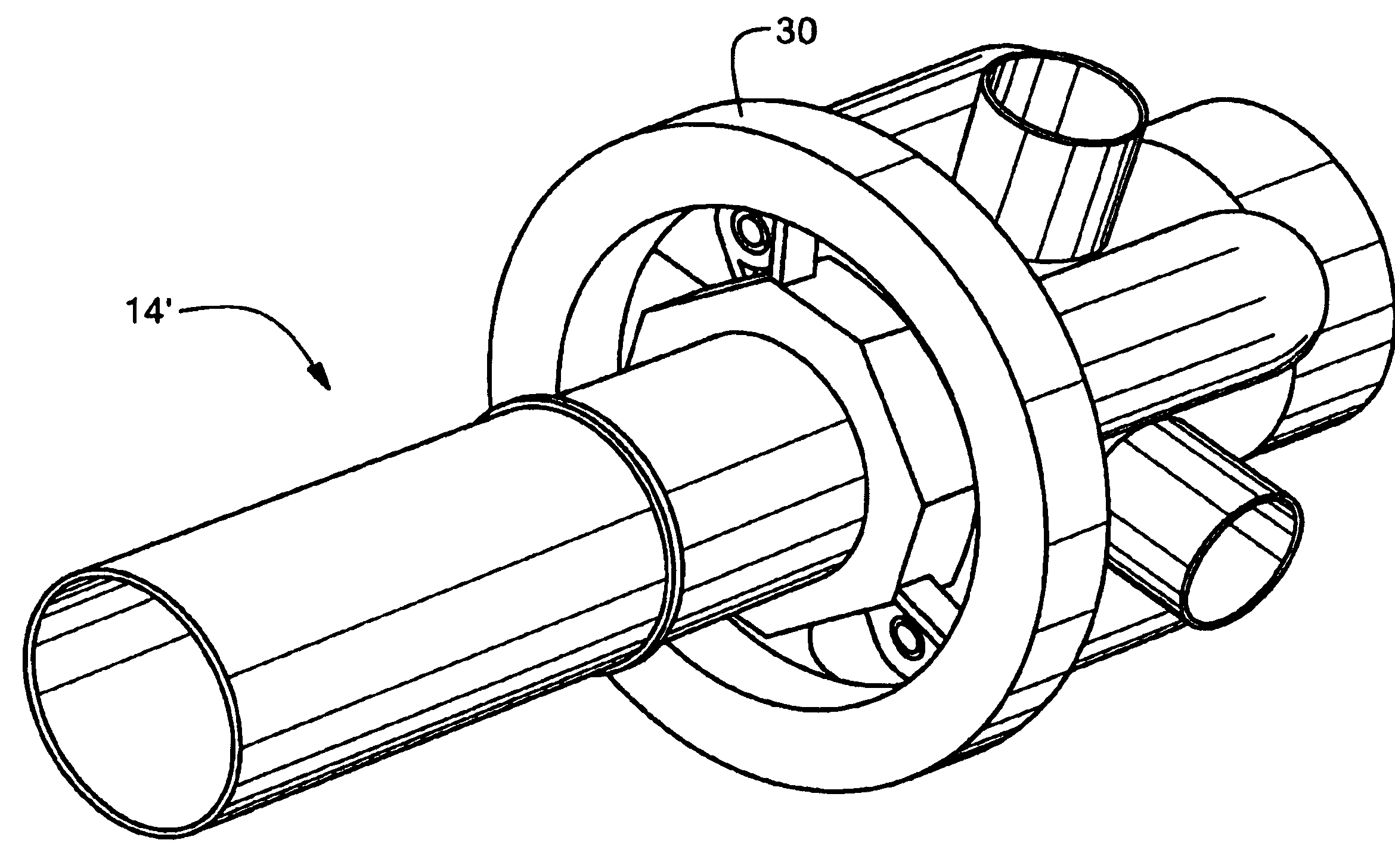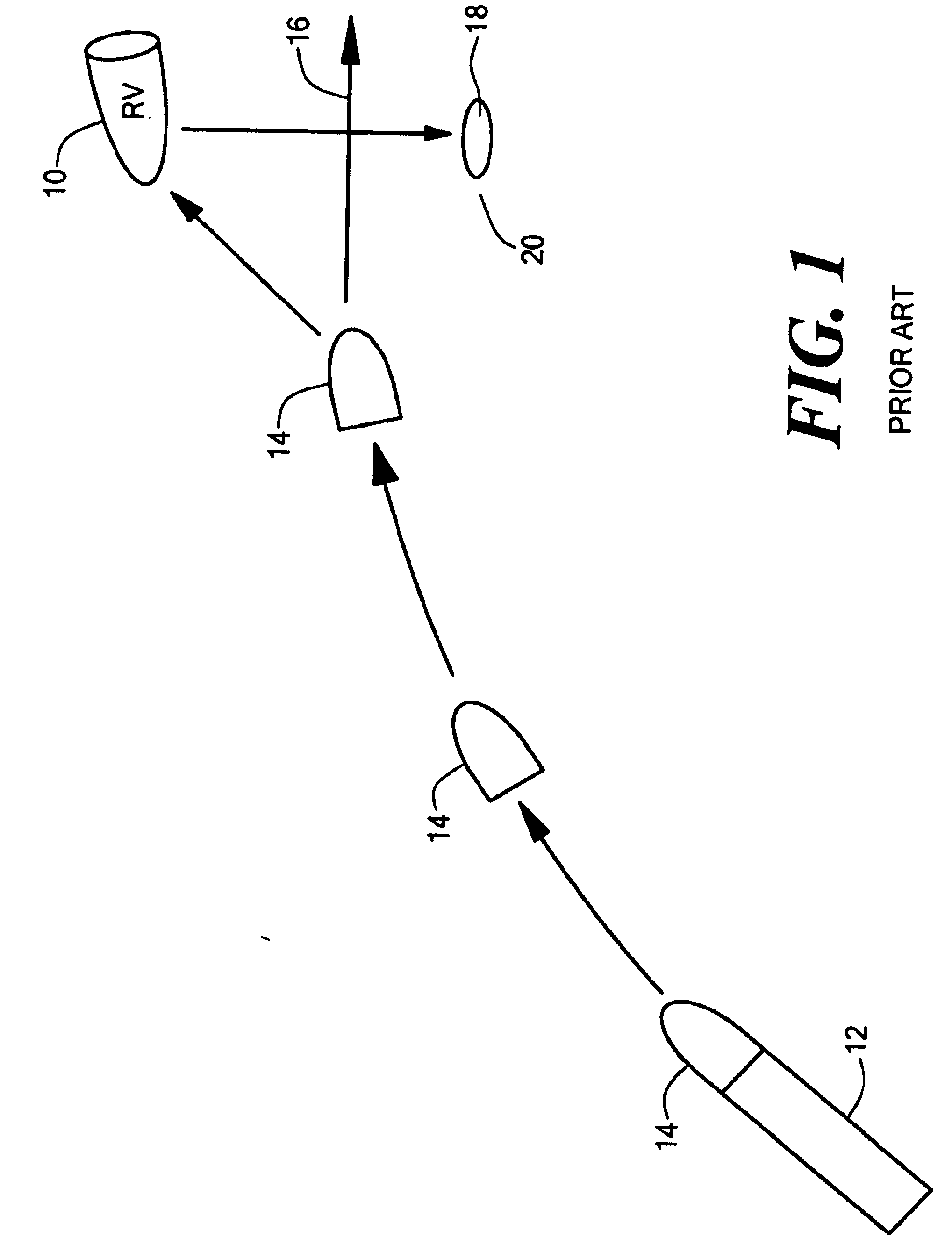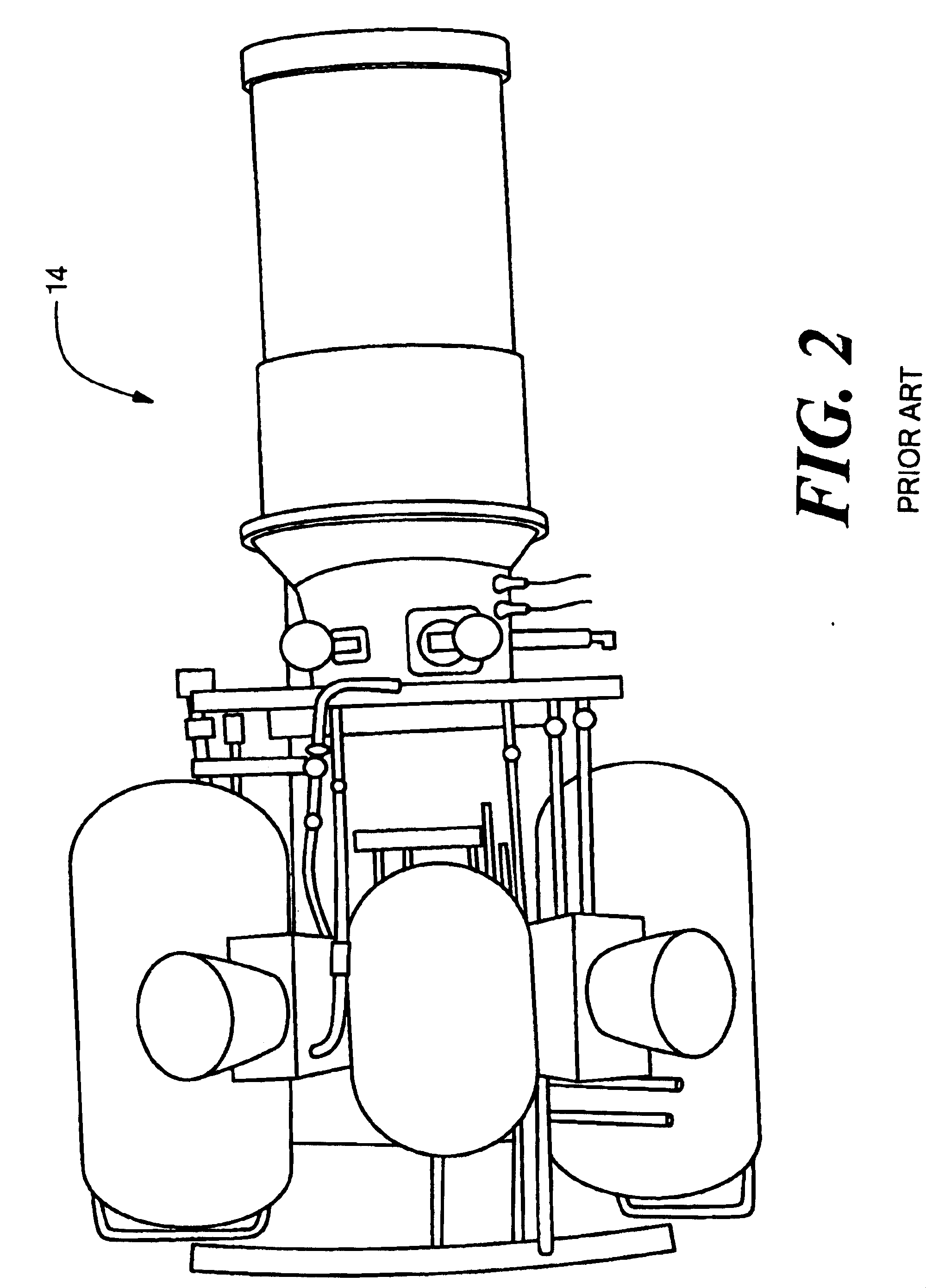Fixed deployed net for hit-to-kill vehicle
a hit-to-kill vehicle and fixed-deployed net technology, applied in the direction of launching weapons, launching rockets, transportation and packaging, etc., can solve the problems of not being able to navigate, not always effective at destroying nuclear targets, and heavy casualties,
- Summary
- Abstract
- Description
- Claims
- Application Information
AI Technical Summary
Benefits of technology
Problems solved by technology
Method used
Image
Examples
Embodiment Construction
[0028] As discussed in the background section above, hit-to-kill vehicles are typically launched into a position proximate re-entry vehicle 10, FIG. 1 or other target via missile 12. Hit-to-kill vehicle 14 is navigatable and designed to strike re-entry vehicle 10 to render it inoperable. Counter measures, however, can be used to avoid kill vehicle 14. Vector 16 shows kill vehicle 14 missing re-entry vehicle 10. Moreover, nuclear or biological bomblets and chemical submunition payloads 18 are carried by some threats and one or more of these bomblets or chemical submunition payloads 18 can survive, as shown at 20, and cause heavy casualties even if kill vehicle 14 does accurately strike target 10. FIG. 2 shows hit-to-kill vehicle 14 in more detail.
[0029] In this invention, hit-to-kill 14′, FIG. 3 is modified to include hub 30 encircling vehicle 14. Hub 30 includes a net, means for deploying the net, and a plurality of kinetic energy rod warhead rods packaged therein preferably secure...
PUM
 Login to View More
Login to View More Abstract
Description
Claims
Application Information
 Login to View More
Login to View More - R&D
- Intellectual Property
- Life Sciences
- Materials
- Tech Scout
- Unparalleled Data Quality
- Higher Quality Content
- 60% Fewer Hallucinations
Browse by: Latest US Patents, China's latest patents, Technical Efficacy Thesaurus, Application Domain, Technology Topic, Popular Technical Reports.
© 2025 PatSnap. All rights reserved.Legal|Privacy policy|Modern Slavery Act Transparency Statement|Sitemap|About US| Contact US: help@patsnap.com



